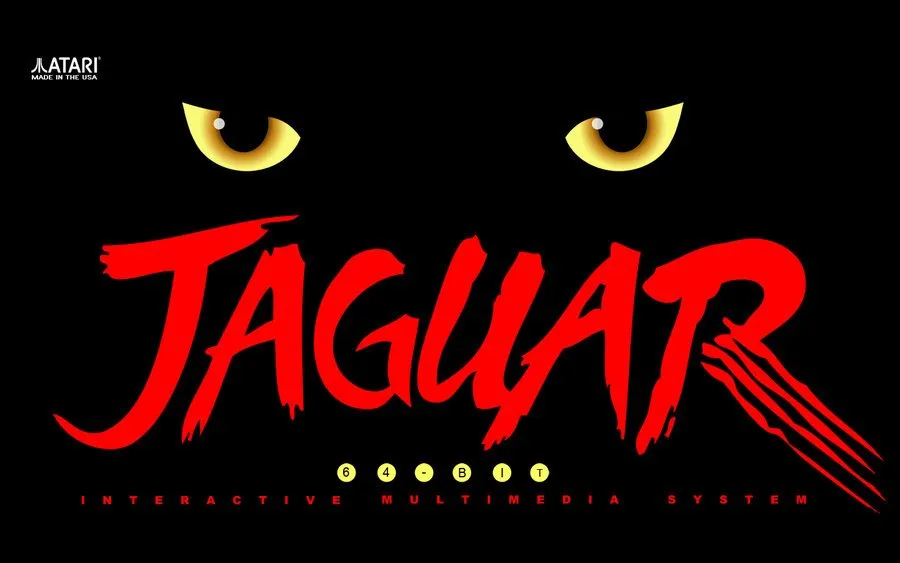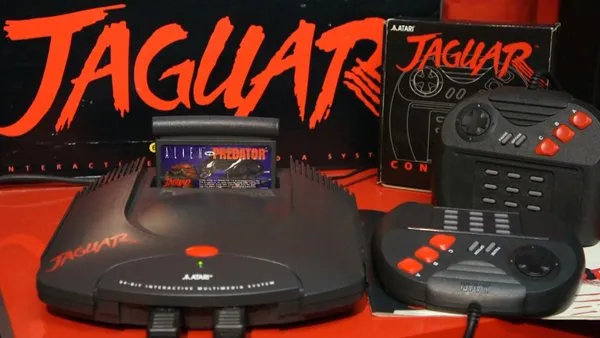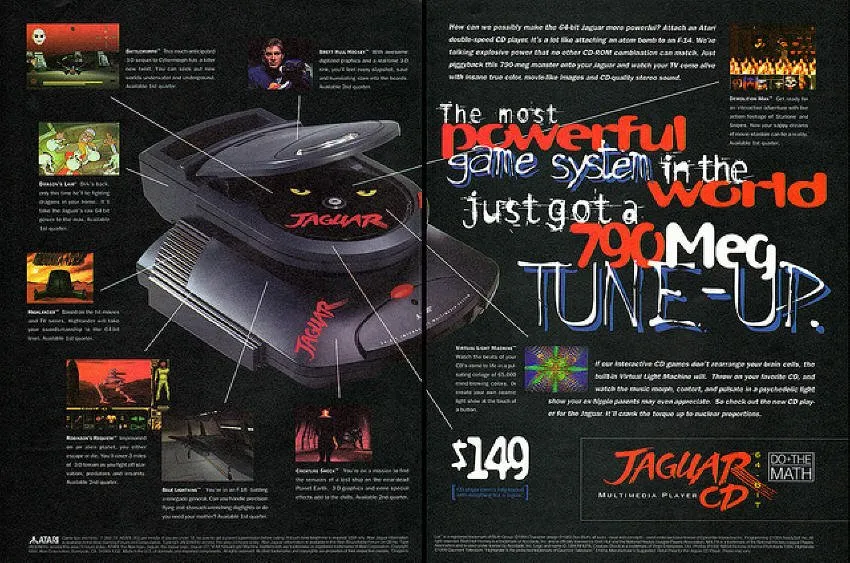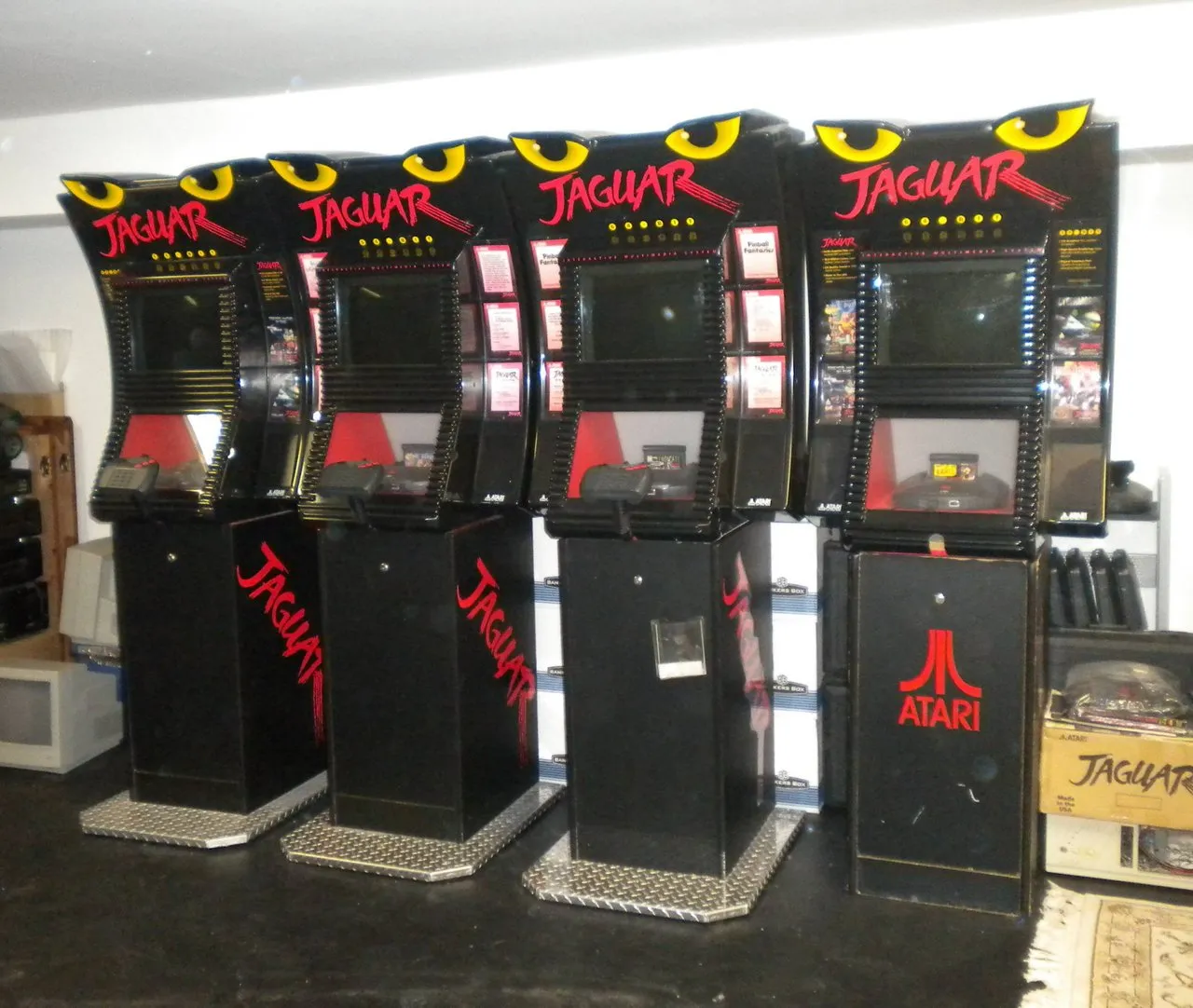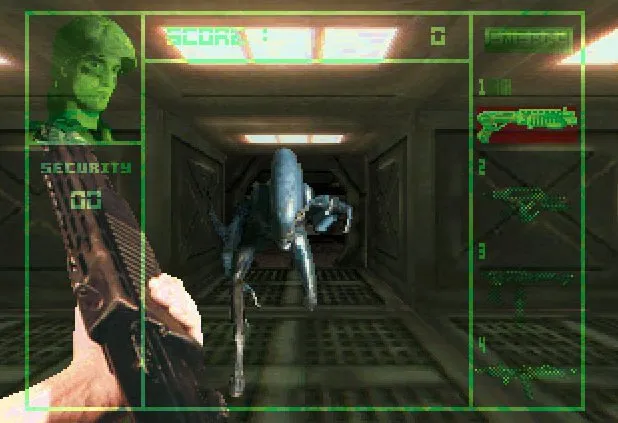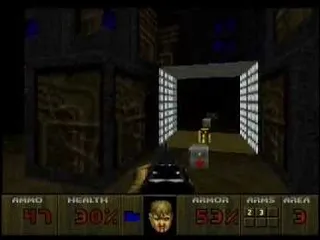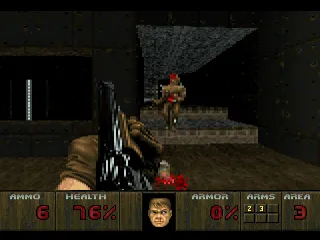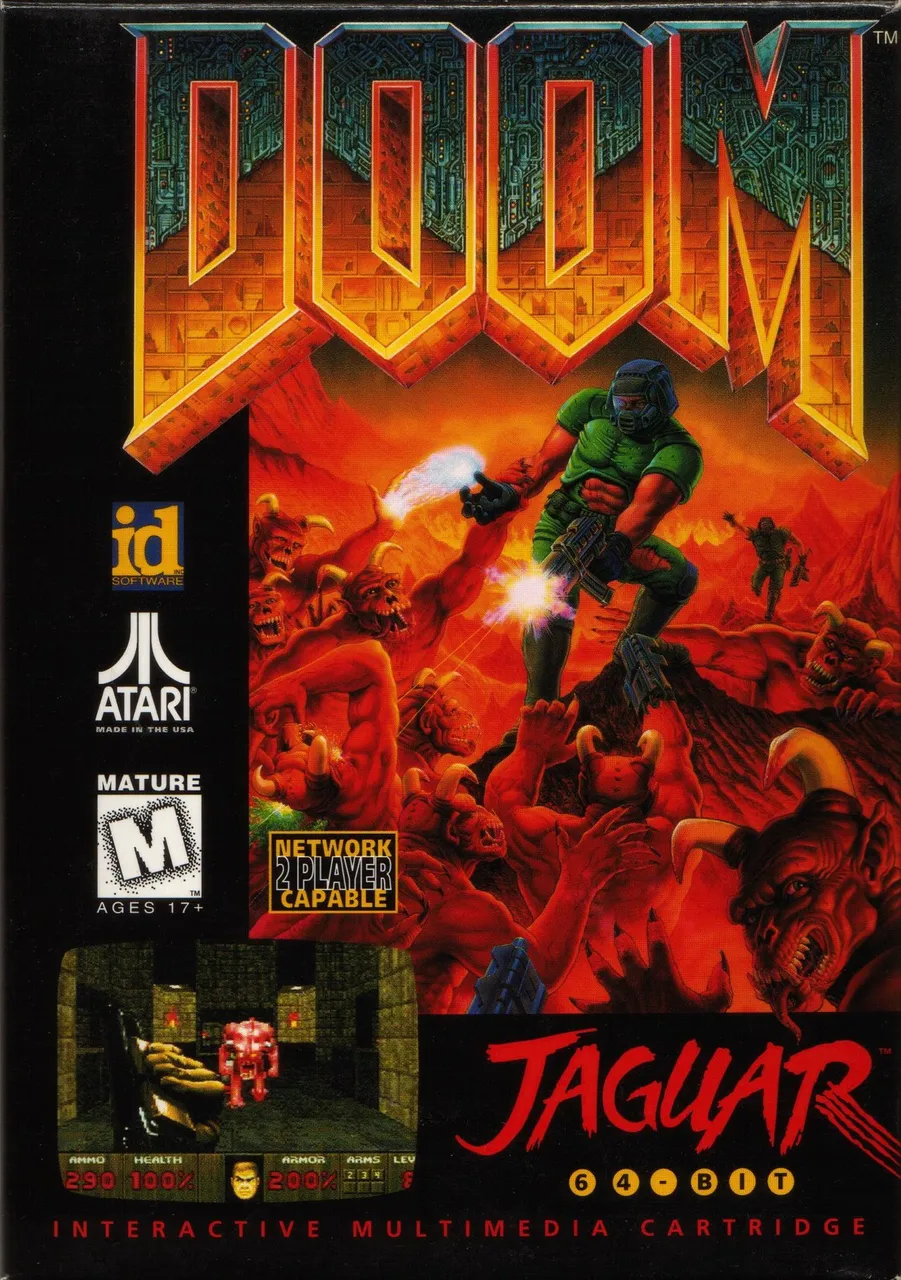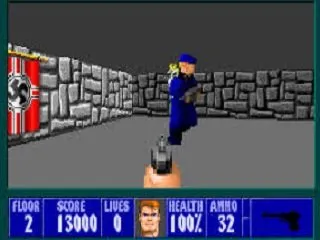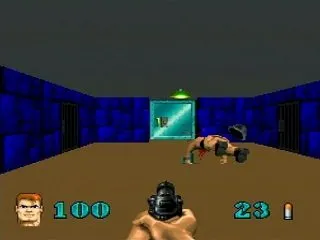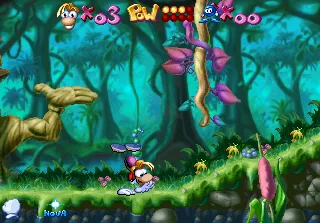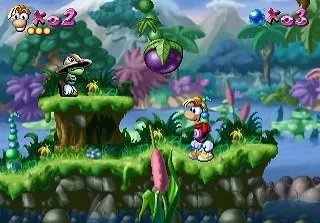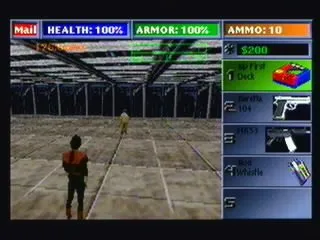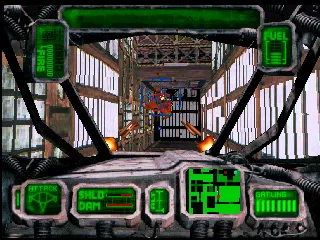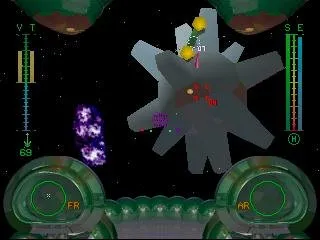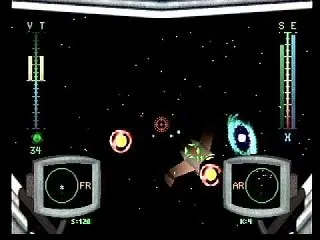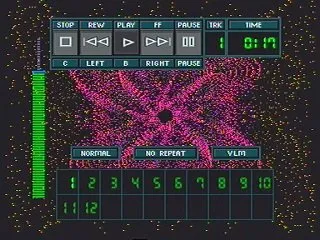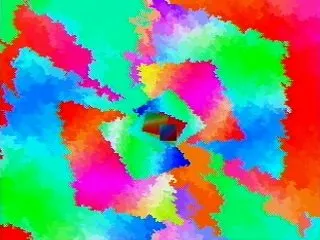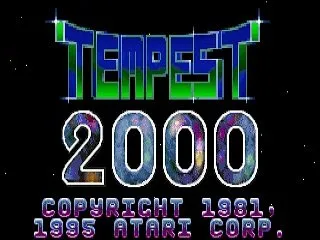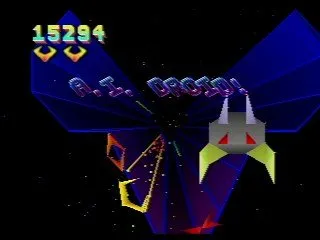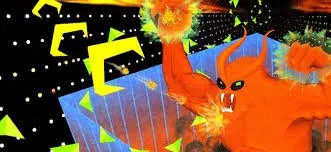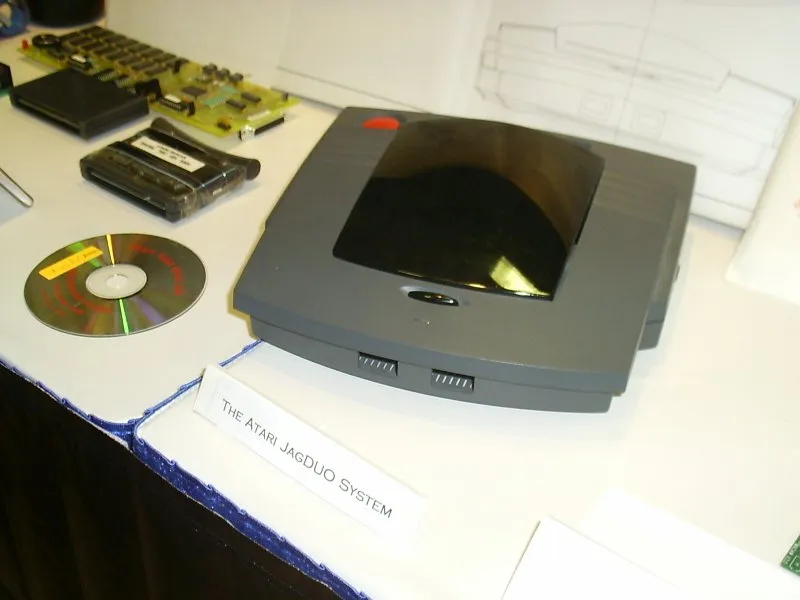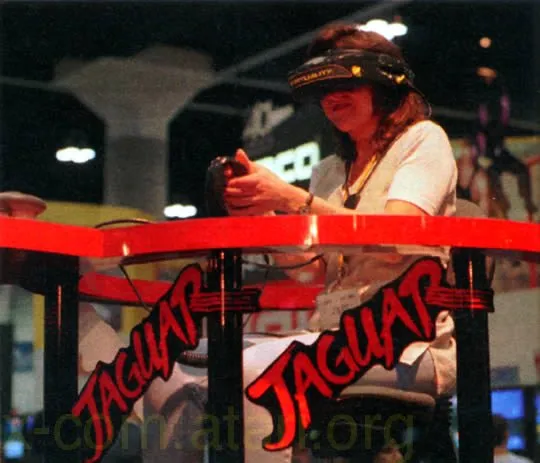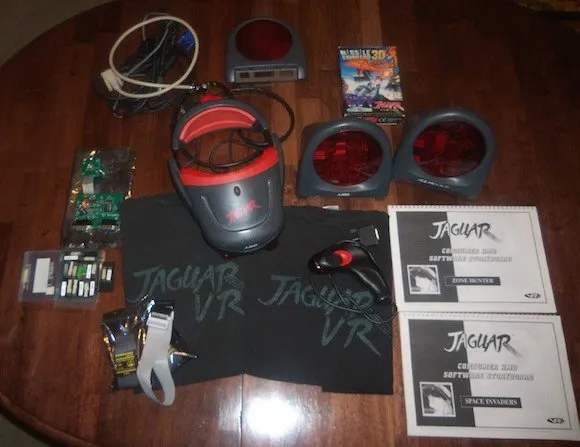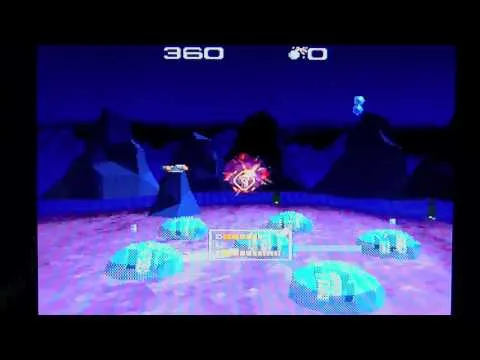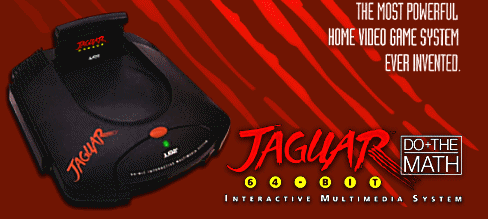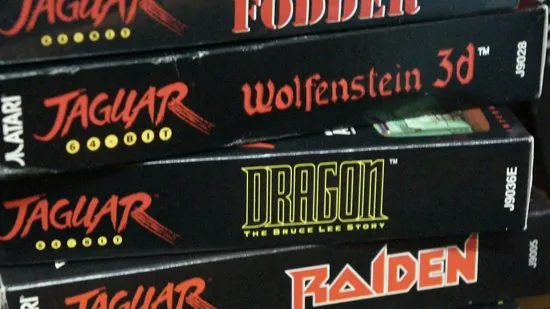Boy can I pick 'em. Every console I ever bought wound up losing, and in many cases I picked ones that already lost. Maybe I just have a subconscious attraction to underdogs? Name a failed console and I had it. Sega Saturn, Turbo GrafX 16, 3DO, 32X, and yes...the Atari Jaguar. Listening to internet personalities trash the Jaguar is a weird feeling because I want to defend it out of nostalgia, but I also know many of their accusations are true. Being a Jag fan is rough.
Rewind to 1995. I'm in middle school. N64 isn't out yet, but I want a next gen system. I already picked up the 32X from the bargain bin, and learned from the experience that I could have next gen hardware and games for a steep discount if I was willing to buy only failed consoles. Of course such machines have only a few good games, but I could only afford a few games anyway.
I was initially intrigued by the Jag just because it's such a good looking machine. It looks sleek, evil, and futuristic, sharing a red and black color scheme with another failed console I love, the Virtual Boy. The kiosks looked even cooler. At the time the graphics really were impressive, as the Jag came out just one year after the Super Nintendo and was primarily in competition with 16 bit machines.
If you look at something like Aliens versus Predator, there's just nothing on the SNES or Genesis which remotely compares. It looks like a first gen PS1 or Saturn title. A bit of a wasted opportunity though as the poor framerate was due entirely to being an open world game which calculated the positions and activities of all enemies on the map at all times. Had it been a more traditional linear fps without that feature, it might've run a lot smoother.
Atari Jaguar Doom actually looked like Doom. It ran shockingly well too, with an actual smooth, playable framerate, especially by comparison with the Saturn and 3DO versions. Most other console versions of Doom at the time had a border around the screen to reduce the view size and thus increase framerate.
Not on Jag Doom. It had no music, but only because Jag hardware is a mess of different chips that fight each other for system resources, and the chip normally used for music was needed to handle collision and hit detection instead. The lighting effects were also present in Jag Doom, but missing from many other ports.
Jag also had a stellar port of Wolfenstein 3D which not only ran at a silky full screen 60fps, but which improved substantially on the resolution and color depth of the original's textures and sprites. Just compare the screenshots below. On the left, the original Wolf 3D for IBM PC. On the right, Jag Wolf.
I like to compare Jag to the Xbox. An American console from a computer company which many laughed at for the large controllers, but which boasted unusual graphical horsepower for the time and was home to many excellent PC first person shooter ports.
Not many know it, but the first Rayman game was originally a Jaguar exclusive (until the console began to blatantly flop that is). It really shows off the Jaguar's 2D muscle, sporting a rich color palette no 16 bit machine could match, with the exception of the Neo Geo.
A good basis of comparison, to get an idea of the Jaguar's power, would be the Gameboy Advance. It could do pretty much all the same things, and in fact the GBA port of Doom was based on the source code from the Jaguar port.
Just as the GBA began to receive sophisticated 3D games near the end of its life cycle as devs came to grips with the nuances of the hardware, so too did the Jaguar receive increasingly well programmed 3D games even into its death throes. Black Ice, White Noise (above left) being one example, Skyhammer (above right) being another. Though Skyhammer ultimately did get a post-mortem release.
Many games in development when Jag failed were canned, but later salvaged by dedicated hobbyists. Songbird Productions is one of the main publishers of these games which would otherwise never have seen the light of day, and perhaps the most famous such title is Battlesphere (seen above). An up to 16 player space dogfighting game which is a crowd pleaser at retro gaming conventions to this day.
Late game, last ditch efforts to revitalize the Jaguar such as the six button pro controller and Jaguar CD all failed. Jag was dead in the water by the time I got it. But even the CD addon was not without hidden gems. Inserting a music CD would bring up the Virtual Light Machine, a sort of primitive precursor to modern music visualizers like Milkdrop.
I think a lot of my affection for the Jag owes to pure chance. I happened to buy only the best games for it early on, and its failure didn't bother me as I didn't buy it at launch, but after it had already tanked. Playing Tempest 2000 for the first time was a mind blowing revelation.
What an amazingly fun, addictive game. You can see how, if you only ever bought Tempest, Rayman, Doom, Wolfenstein and the handful of other great games on the Jag, it would be confusing why it failed and why people today don't like it.
Appreciating failed consoles requires a pair of rose colored glasses, and careful curation. To experience each machine at its very best, simply collect only the best games it had to offer, and never expose yourself to the rest of its library. It's not an accurate picture of what it was like to own a Jag back in the day, but it's how I prefer to remember it.
What might've become of the Jaguar had it succeeded, or at least hung on a bit longer? Who can say. In terms of graphical fidelity, probably we could expect 3D games on part with the likes of Asterix and Obelix XXL for GBA, or any of that handheld's later 3D driving games. There also exist rare prototypes of an "all in one" unit called the Jag Duo which integrates the CD drive, seen above.
There were even plans to bring VR to the Jaguar back during the 1990s VR bubble. Based on the best tech available then, provided by Virtuality (makers of VR arcade machines) the Jaguar VR actually had several games under development, one of which was released as a standard cartridge with the VR support intact even though the headset never became available for purchase.
The fact that we never got the Jag VR is no great tragedy. 1990s VR is better left in the 1990s. But it was a serious effort, with optical positional tracking just like the Oculus Rift, and the best resolution and field of view that were feasible in a home unit. IIRC the fov was around 45 degrees compared to 60 in the arcade Virtuality machines, and resolution was somewhere in the ballpark of QVGA (320*240), though probably a bit less.
Above you can see gameplay from Missile Command 3D, the only VR supported Jag title ever released. The unusually fluid framerate is due to the fact it was designed to run acceptably while being rendered twice, once for each eye, but in the end that constraint proved unnecessary, effectively doubling final performance. If only all the 3D Jaguar titles were programmed under those conditions.
For all its well documented faults, the Jaguar really was a promising system. I'll always be haunted by "what ifs" concerning what the industry would be like today if Jaguar had succeeded and gone on to spawn followup consoles. Today the only visible remains of its legacy is stuff like this, and this. A humiliating fate for the swan song of a gaming industry veteran like Atari, which has itself also deteriorated to a shell of its former self.
But I won't remember Jaguar for stuff like that. It defined such a formative period in my life, I can't help but look back on it fondly. So instead, I'll remember it at its very best. I'll remember it for the few great games that made me really appreciate its merits, and wonder what might've been.
